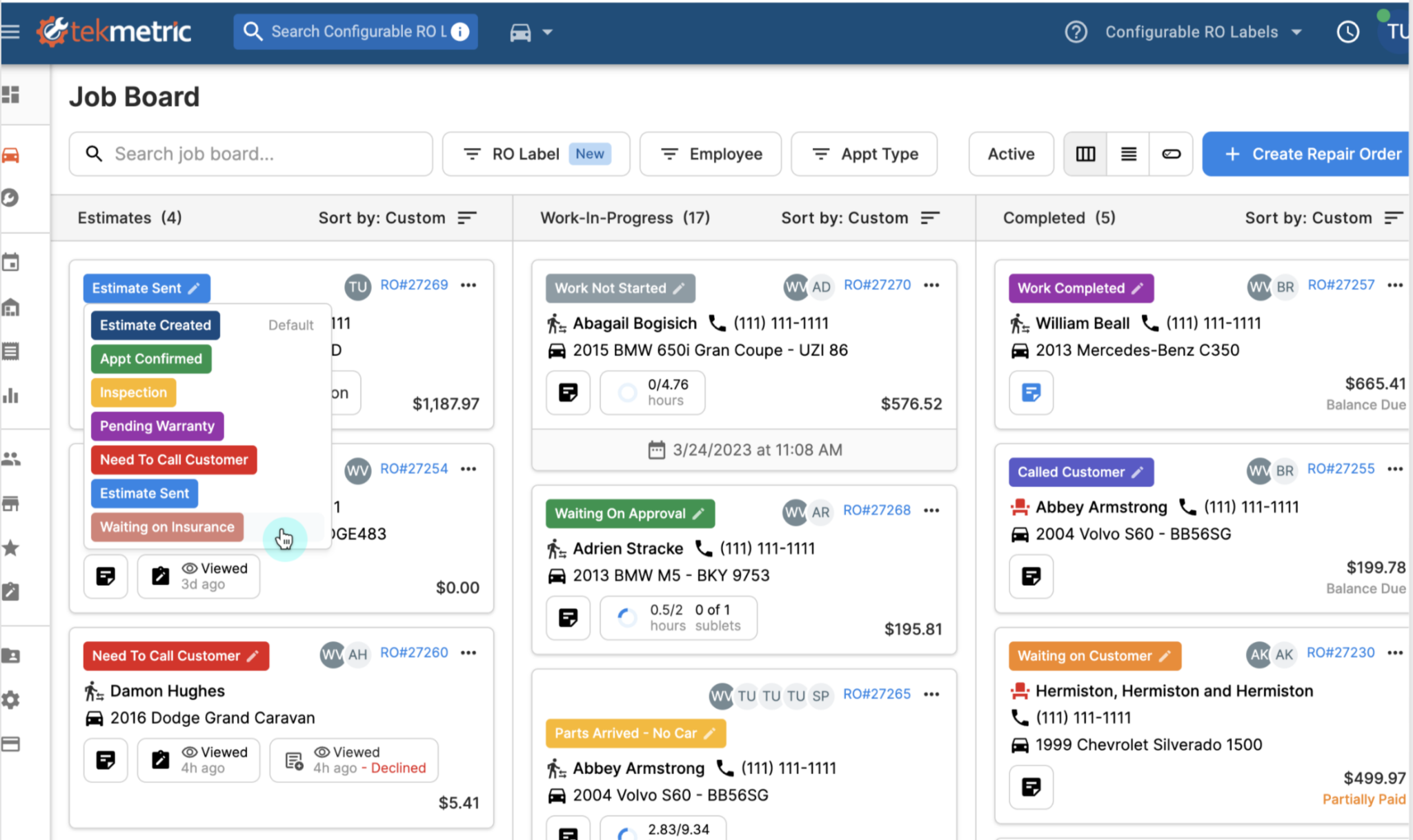Determining the right Electronic Health Record (EHR) software can be an overwhelming task with countless options available. Research shows that choosing a suitable EHR system is crucial for effective medical practice management and health data security.
This blog provides a comprehensive buyer’s guide to assist you in navigating through the sea of EHR systems to find the perfect fit tailored to your specific needs. Let’s dive into this essential topic, aiming to simplify your journey towards securing ideal health record management software.
Understanding Electronic Health Record (EHR) Software
Electronic Health Record (EHR) software is a digital system that enables healthcare providers to create, access, and manage patients’ medical records electronically. It eliminates the need for paper-based record-keeping and streamlines various clinical and administrative processes.
EHRs contain comprehensive patient information such as medical history, diagnoses, medications, lab results, allergies, and more. They offer numerous benefits over traditional paper records, including improved efficiency, accuracy, accessibility, and patient engagement.
It’s important to understand the differences between EHRs and Electronic Medical Records (EMRs), as well as the key features to look for when choosing an EHR software solution.
EHR vs. EMR: What’s the Difference?
EMR stands for Electronic Medical Records. These are like a digital copy of paper charts in a doctor’s office. They keep notes on patients but only in one place, such as the office where you go to the doctor.
On the other hand, EHR means Electronic Health Records. These do more than EMRs. They keep track of all health information not just from one visit or one doctor’s office but from many doctors and visits over time.
EHR systems link up with labs, specialists, imaging facilities, pharmacies, and emergency rooms. This makes it really easy for your different doctors to see all your medical info at once without calling each other or waiting for faxes or mail.
For example, if you get an X-ray at Hospital A but then have follow-up care at Clinic B miles away, both places can see your X-ray report in real time through the EHR system.
Benefits of EHR Software
EHR software makes work easier for doctors. It lets them store a lot of patient data in one place. This helps keep records safe and easy to find. EHRs can hold notes from doctors, test results, and medicines taken by patients.
Another good thing about EHR software is that it saves time. Doctors do not need to write everything by hand or type it into a computer. They can just click on the right options in the program.
This also helps avoid mistakes in patient charts.
Factors to Consider When Choosing an EHR Software
When choosing an EHR software, there are several key factors to consider. These include the type of EHR system, whether it is cloud-based or on-premise, and the specific features that are important for your organization’s needs.
Additionally, it is crucial to assess your organization’s readiness for implementing an EHR system and create a roadmap for implementation. You should also ensure that the software is MACRA and MIPS certified, as well as capable of online portal and e-prescribing functionalities.
Finally, considering features such as clinical decision support and AI machine learning can further enhance the value of your chosen EHR software.
Types of EHR Systems
There are different types of EHR systems available to choose from. Here are some of the main types:
| EHR System Types | Description |
|---|---|
| Cloud-based EHR Systems | 1. Store data on remote servers, accessible from anywhere with an internet connection. 2. Offer scalability and flexibility for practices of all sizes. 3. Examples include DrChrono and Kareo Clinical. |
| On-premise EHR Systems | 1. Installed and managed locally within the practice’s infrastructure. 2. Provide full control over data security and customization options. 3. Examples include Practice Fusion. |
| Hybrid EHR Systems | 1. Combine both cloud-based and on-premise functionalities. 2. Offer benefits like offline accessibility and cloud data storage. 3. EMR software like Epic offers hybrid solutions. |
| Specialty-specific EHR Systems | 1. Designed for specific medical specialties with specialized features and templates. 2. Tailored to meet the unique needs of the specialty. 3. Examples include Nextech’s electronic medical records system for dermatology. |
| Integrated EHR Systems | 1. Integrate with other healthcare software applications like practice management or billing software. 2. Streamline workflows by sharing data across different tools, reducing errors. 3. Examples include Allscripts Healthcare Solutions. |
Cloud-based vs. on-premise
When deciding between cloud-based or on-premise EHR solutions, it’s essential to consider several factors. Here’s a comparison of the two in an HTML table format:
| Cloud-Based EHR | On-Premise EHR | |
|---|---|---|
| Cost | Monthly subscription fee | Significant upfront investment |
| Accessibility | Remote accessibility | Location-dependent access |
| Maintenance and Upgrades | Managed by the provider | Your responsibility |
| Security | Robust security measures with potential data breach risks | More control over data security, but also your responsibility |
| Scalability | Easily scalable with additional users and features | Requires significant IT work and additional costs for scaling |
Whether you opt for a cloud-based or on-premise EHR solution will depend on your practice’s specific needs, budget, and resources. It’s essential to consider these factors carefully to make an informed decision.
Key Features to Look for
Here are some important features to look for when choosing electronic health record (EHR) software:
| Key Features | Description |
|---|---|
| User-friendly interface | Choose software that is easy to navigate and use, with clear menus and intuitive design. |
| Customization options | Look for software that allows you to customize templates and workflows to fit your specific needs and specialty. |
| Interoperability capabilities | Ensure that the EHR system can seamlessly exchange data with other systems, such as laboratories, pharmacies, and imaging centers. |
| Security measures | Make sure the software has robust security features like encryption, user access controls, and regular data backups to protect patient information. |
| Integration with billing and coding | Look for software that integrates with billing and coding systems to streamline revenue cycle management. |
| Mobile access | Consider whether the software offers mobile applications or a web-based interface, allowing you to access patient records on-the-go. |
| Reporting and analytics tools | Choose software that provides robust reporting capabilities, allowing you to analyze data, track performance metrics, and identify areas for improvement. |
| Patient engagement features | Look for EHR systems that offer patient portals or secure messaging functionalities, enabling patients to access their medical records and communicate with healthcare providers. |
How to Choose the Best EHR Software for Your Needs
To choose the best EHR software for your needs, you should assess your organization’s readiness, build an implementation roadmap, consider MACRA & MIPS certification, check for online portal and e-prescribing capabilities, and think about clinical decision support and AI machine learning.
These steps will help ensure that you find the right electronic health record software to streamline your medical practice. Read more to make an informed decision.
Assess your organization’s readiness
Before choosing an electronic health record (EHR) software, it is important to assess your organization’s readiness. This means evaluating whether your practice has the necessary infrastructure, resources, and support to implement and utilize an EHR system effectively.
Take into consideration factors such as your budget, staff training needs, existing IT infrastructure, and workflow processes. Ensure that you have sufficient time and resources for implementation and that your team is prepared for the changes that come with adopting EHR technology.
By assessing your organization’s readiness beforehand, you can make a more informed decision when selecting the best EHR software for your needs.
Build an implementation roadmap
To successfully implement an electronic health record (EHR) system, it is important to create a roadmap that outlines the steps and timeline for the process. Here are the key considerations when building an implementation roadmap:
| Steps for EHR Implementation | Description |
|---|---|
| Assess your organization’s readiness | Evaluate your current systems and processes to determine if your organization is ready to implement an EHR system. Consider factors such as staff training, infrastructure, and budget. |
| Define organizational goals | Clearly define what you hope to achieve with the implementation of an EHR system. This could include improving patient care, increasing efficiency, or meeting regulatory requirements. |
| Create a project team | Assemble a team that will be responsible for overseeing the implementation process. This team should include representatives from different departments within your organization. |
| Develop a timeline | Create a detailed timeline that outlines all the tasks and milestones involved in implementing the EHR system. Be realistic about the time needed for each step and set clear deadlines. |
| Identify key stakeholders | Identify individuals or groups who will be affected by the implementation of the EHR system. This could include healthcare providers, administrative staff, and patients. Get their input and address any concerns or questions they may have. |
| Training and Support | Plan for comprehensive training sessions for all staff members who will be using the EHR system. Additionally, ensure that ongoing technical support is available to address any issues or challenges that arise during implementation. |
| Test and refine | Before fully implementing the EHR system, conduct thorough testing to identify any potential issues or areas for improvement. Make necessary adjustments based on feedback from users. |
Look for MACRA & MIPS certification
Make sure to look for MACRA and MIPS certification when choosing an EHR software. These certifications ensure that the software meets certain standards for quality and performance in healthcare practices.
MACRA (Medicare Access and CHIP Reauthorization Act) and MIPS (Merit-based Incentive Payment System) are important programs that promote value-based care and reward healthcare providers for delivering high-quality services.
By selecting an EHR software with these certifications, you can trust that it is designed to support your practice’s compliance with these programs and optimize your reimbursement opportunities.
Check for online portal and e-prescribing capabilities
Make sure to check if the electronic health record (EHR) software has an online portal and e-prescribing capabilities. An online portal allows patients to access their medical records and communicate with healthcare providers easily.
It can save time for both patients and healthcare professionals. E-prescribing is a feature that enables doctors to send prescriptions electronically to pharmacies, reducing errors and improving efficiency.
So, when choosing EHR software, consider these features as they can enhance patient care and streamline workflows.
Consider clinical decision support and AI machine learning
When choosing the best electronic health record (EHR) software, it is important to consider features such as clinical decision support and AI machine learning. These capabilities can greatly enhance the efficiency and accuracy of healthcare processes.
Clinical decision support systems provide doctors with real-time guidance based on evidence-based medicine, helping them make informed decisions about patient care. AI machine learning algorithms can analyze large amounts of data to identify patterns and trends, enabling predictive analytics and personalized treatment plans.
By considering EHR software that incorporates these advanced technologies, medical practices can improve patient outcomes and streamline their workflows.
Conclusion: – Stay updated on the latest innovations in EHR technology.
In conclusion, staying up-to-date on the latest innovations in EHR technology is crucial for choosing the best electronic health record software. By keeping abreast of advancements, you can ensure that you select a solution that meets your organization’s needs and provides the most efficient and effective healthcare management system.



